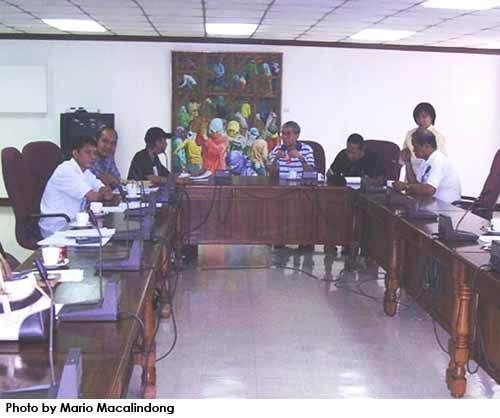
The Komiks Congress being planned for the 2nd week of February is probably the biggest concerted effort to revive the flagging komiks industry in the Philippines.
"Komiks" has enjoyed a rich and vibrant history in the country, which counts it's National Hero Dr. Jose Rizal as the first Filipino cartoonist when he created an adaptation of the tale of the Monkey and the Tortoise, in a format that's undeniably a comics strip.
Tony Velasquez created the first regularly published comic strip "Kenkoy" on the pages of Liwayway Magazine in 1929. The very first comic book to appear in the country, a magazine the full contents of which are comics, was HALAKHAK, which first appeared in 1946. It lasted only 10 issues, plagued by circulation problems. 1947 saw the publication of Pilipino Komiks #1, published by ACE Publications, which ushered in the birth of the full scale Philippine komiks industry.
Pilipino Komiks proved so popular that it spawned many other titles in the succeeding years including Tagalog Klasiks, Hiwaga, Espesyal, and further spawned many other komiks companies.
Komiks enjoyed enormous popularity and circulation for many decades until finally bowing out late in 2005 with the cessation of publication of Pilipino Komiks, which was then being published by Atlas Publishing. The last remaining remnant of the once great industry is Liwayway, which still contains comics within its pages.
The fall of komiks is a subject that is currently being hotly debated across many circles, and can be felt online through many Philippine blogs and message boards.
The komiks industry's fall started to be strongly felt at the beginning of the 90's when komiks companies closed slowy one by one. Its fall saw the rise of "alternate" comics industry, spawned by young artists and fans who saw no venue in which to publish their stories. This new industry, populated by writers and artists who owe little influence from the weakening komiks industry, saw influence from Western and Japanese comics, influence that were strongly felt in their works not only in content but also in format.
From individuals and small groups of young writers and artists rose companies like Alamat, Nautilus, Culture Crash, Mango, Kestrel, PSI-Com and many others whose output have been moderately successful, although have yet to reach the lofty heights the old komiks industry.
Questions have been put forth about the possibility of that happening, amidst the many sources of entertainment currently available, only one of the many things hotly debated by concerned parties.
Indeed, some parties reject this new "alternate" comics industry as a legitimate one, perhaps ignoring the possibility that an industry that grows organically and persists inspite of seemingly insurmoutable economic issues has some qualities worth studying and investigating.
Filipino Komiks #1, published in October 2006, was the first serious attempt at a revival on a national scale by having stories in Tagalog, distributed nationwide, and geared to appeal to the masses, the primary audience of the old komiks industry. FK #1 sold extremely well, indicating rather clearly that the audience and the desire for komiks are still there.
February 2007 now brings the Komiks Congress, spearheaded by personalities of the former Komiks industry like Joe Lad Santos, and most notably Carlo J. Caparas, putting a call out to all Filipino komiks writers and artists to band together and find ways to revive the industry.
I am very excited at this turn of events, and I have high hopes that something good will result from this new enthusiasm geared towards Philippine Komiks. For those who can read Tagalog, you can follow the developing story, and updates to the Congress at THIS THREAD on the Philippine Komiks Message Board, or click on the banner on top of the left column. You might need to register to be able to read it.
I will continue to update readers of this blog on the progress of the Komiks Congress in the coming weeks.
